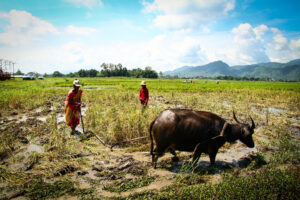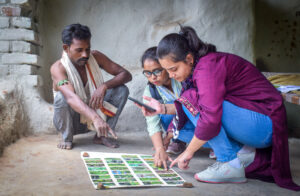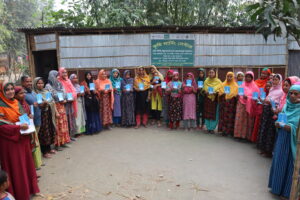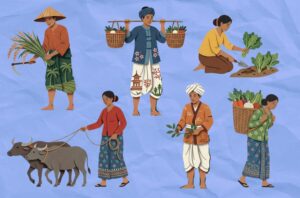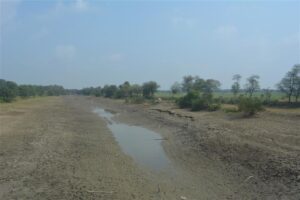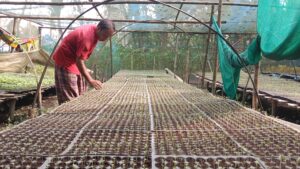In western Odisha, farmer groups and women’s self-help groups are taking the lead in bringing a range of healthier rice varieties to local markets, improving nutrition for families while creating new income opportunities.
By Dillip Kumar Rout, Sampad Nayak, Mosharaf Hossain, and Swati Nayak
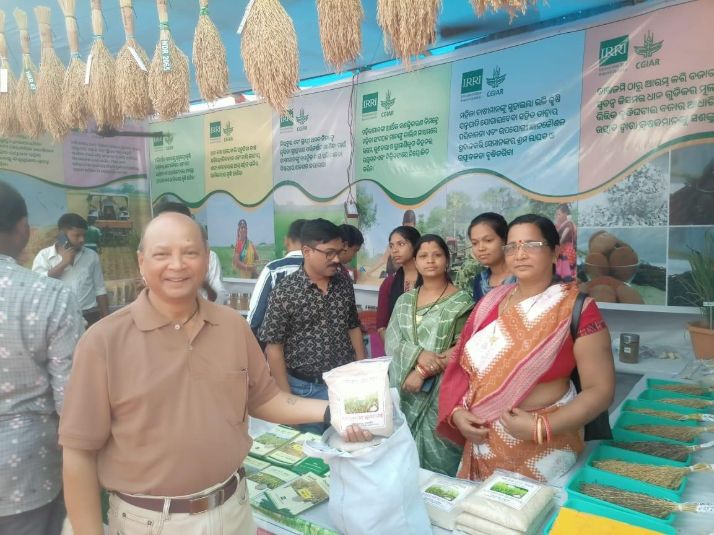
At the Pallishree Mela of 2025 in Balangir, a famous farmer fair that celebrates agriculture, community innovations, products, and services, a large number of visitors gathered around a stall run by the Maa Maheswari Women Self-Help Group (SHG), a proactive community partner in catalyzed efforts by IRRI in the region. On display were packets of DRR Dhan 67, enriched with zinc (27.6 mg/kg) and iron, and Telangana Sona, a low glycemic index (51–53) variety suited for people managing diabetes.
For many families, it was a chance to bring home rice that offered both nutrition and flavor, a result of an initiative supported by the Department of Agriculture and Farmers’ Empowerment (DAFE), Government of Odisha. These healthier rice varieties, widely promoted by women farmers and entrepreneurs, were developed by One Rice Breeding Partners, the Indian Institute of Rice Research (IIRR), and Professor Jayashankar Telangana State Agricultural University (PJTSAU).
The women behind the stall are part of a growing effort in western Odisha to change how value-added rice varieties are produced, positioned, and marketed. With support from the National Bank for Agriculture and Rural Development (NABARD) and the Odisha Rural Development and Marketing Society (ORMAS), farmer collectives and SHGs are promoting nutrient-rich rice to meet the rising demand for healthier food.
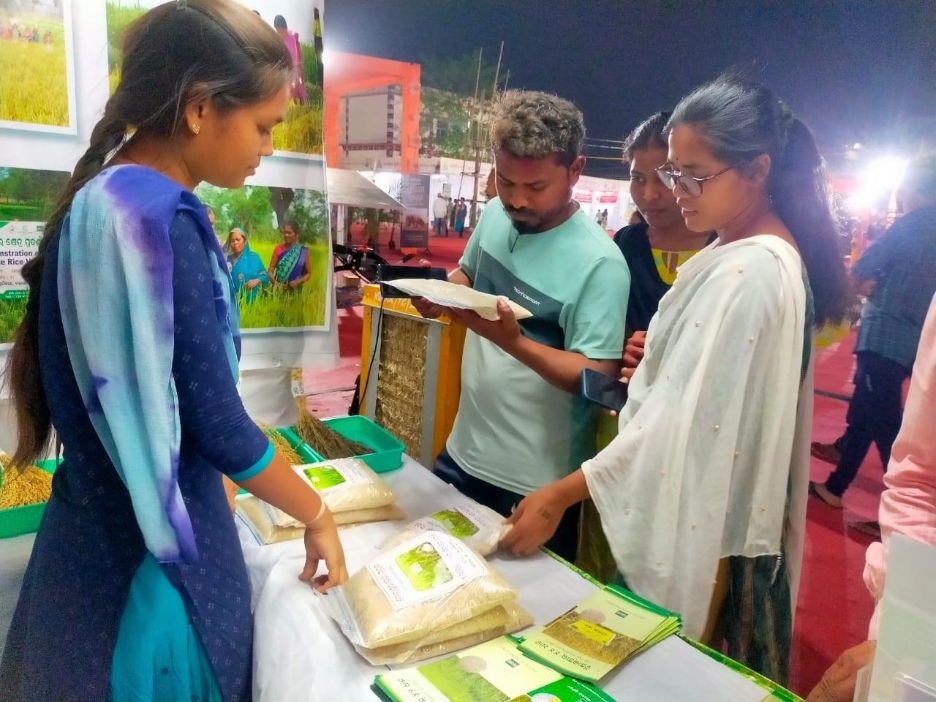
At the Regional Agriculture Fare and the Loka Mohatsav, Balangir, the Puintala Farmers Producer Company also presented varieties such as CR Dhan 315, DRR Dhan 48, and Telangana Sona (developed by CRRI, IIRR, PJTSAU). Despite being priced at ₹100 per kilogram, more than double the usual market rate of ₹40–45, their products drew strong interest from buyers eager for rice with added health benefits.
For the Maa Maheswari SHG, they began with three varieties which are yield competitive and offer health benefits to consumers. The group attended project-facilitated training support from NABARD and ORMAS, milled rice locally, and sold directly at fairs and exhibitions to allow them to earn more from each sale through a health-focused product positioning strategy. At the Regional Farm Mechanisation Mela, they sold 2.5 quintals of rice in their first year, bringing in nearly ₹21,000.
Why these varieties matter
Each of these varieties offer distinct health and nutritional benefits. Swarna Shakti helps reduce iron deficiency, DRR Dhan 48 increases zinc intake, and Telangana Sona supports better blood sugar control. These rice varieties sold in local markets improve nutrition and create new income opportunities for farmers.
These community-led efforts also strengthen local food security. The cultivation and marketing of diverse rice varieties suited to local conditions reduce farmers’ reliance on a single crop or external supply chains. This diversity builds resilience to climate and market shocks and ensures that nutritious rice remains accessible and affordable even in difficult seasons.
Building stronger market links
NABARD and ORMAS are helping strengthen branding, packaging, and consumer connections so that farmers and SHGs can sell directly to households. This ensures more value goes back to producers, while consumers gain access to healthier rice.
“We want farmers and SHG members to not just grow but also confidently market nutrient-enriched rice, ensuring they receive fair returns while consumers benefit from healthier options,” said Dr Vivek Kumar Nayak, NABARD District Development Manager at the Bolangir event.

